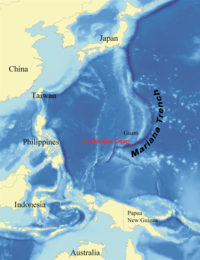
Photo from wikipedia
Purpose: To compare the axial length (AL) obtained by A-scan biometry (PAC SCAN 300AP; Sonomed Escalon, USA) and LENSTAR-LS 900 (Haag-Streit, Koeniz, Switzerland) in silicone oil (SiO)-filled eyes. Methods: AL… Click to show full abstract
Purpose: To compare the axial length (AL) obtained by A-scan biometry (PAC SCAN 300AP; Sonomed Escalon, USA) and LENSTAR-LS 900 (Haag-Streit, Koeniz, Switzerland) in silicone oil (SiO)-filled eyes. Methods: AL measurements were taken in 50 SiO-filled eyes using A-scan and LENSTAR-LS 900 before SiO removal and 1 month following SiO removal. In the subset of patients requiring intraocular lens (IOL) insertion, the predicted refraction and the refraction obtained were compared. IOL power in these patients was calculated using SRK-T formula and the AL obtained by LENSTAR. Results: In SiO-filled eyes, a significant difference was noted between the AL values obtained using the two methods (P = 0.0002). No significant difference was noted after SiO removal (P = 0.634). In the subset of patients needing IOL insertion, no significant difference (P = 0.07) was seen between target refractive error and postoperative refractive error (mean deviation from the target being 0.176 diopter). AL of an SiO-filled eye is more accurately measured using optical low coherence reflectometry (OLCR)-based biometry (LENSTAR) than with conventional acoustic biometry (A-scan). Conclusion: We conclude that LENSTAR gives more accurate biometry in an SiO-filled eye. The AL obtained after SiO removal was comparable and showed no significant difference.
Journal Title: Indian Journal of Ophthalmology
Year Published: 2022
Link to full text (if available)
Share on Social Media: Sign Up to like & get
recommendations!